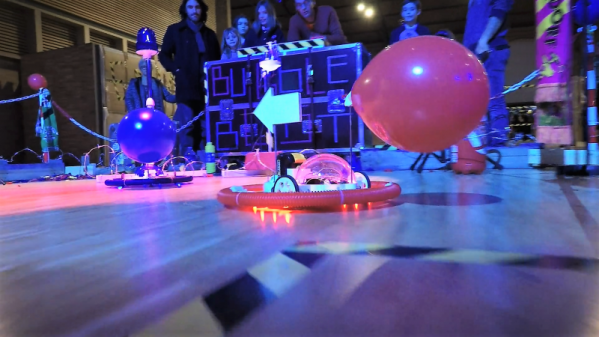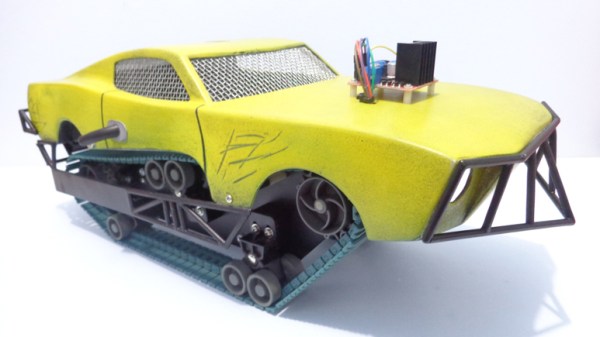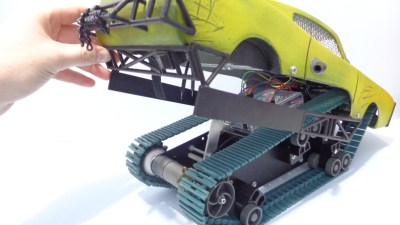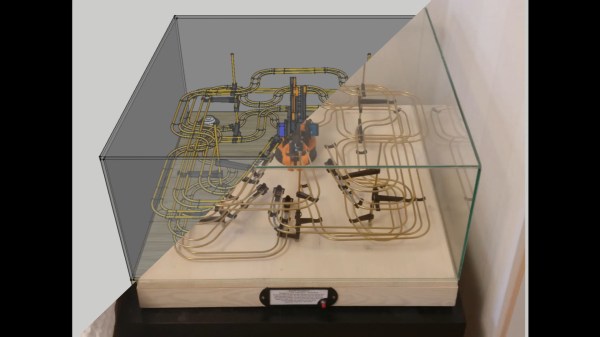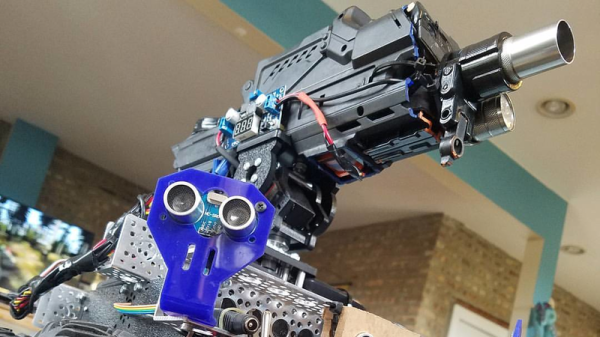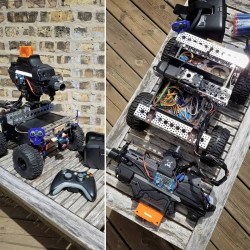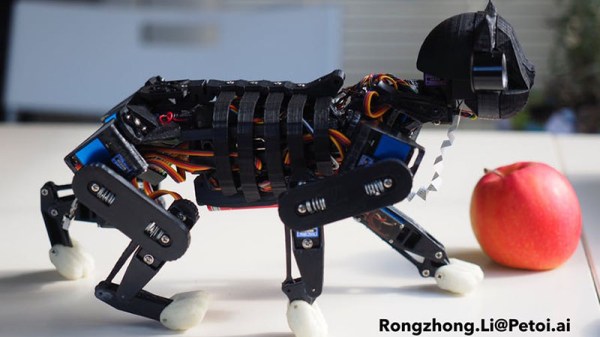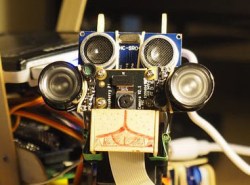Because nothing says “fun for kids” like barbed wire and hypodermic needles, here’s an interactive real-world game that everyone can enjoy. Think of it as a kinder, gentler version of Robot Wars, where the object of the game is to pop the balloon on the other player’s robot before yours get popped. Sounds simple, but the simple games are often the most engaging, and that sure seems to be the case here.
The current incarnation of “Bubble Blast” stems from a project [Niklas Roy] undertook for a festival in Tunisia in 2017. That first version used heavily hacked toy RC cars controlled with arcade joysticks. It was a big hit with the crowd, so [Niklas] built a second version for another festival, and incorporated lessons learned from version 1.0. The new robots are built from scratch from 3D-printed parts. Two motors drive each bot, with remote control provided by a 433-MHz transceiver module. The UI was greatly improved with big trackballs, also scratch built. The game field was expanded and extra obstacles were added, including a barbed wire border as a hazard to the festooned bots. And just for fun, [Niklas] added a bubble machine, also built from scratch.
The game looks like a ton of fun, and seems like one of those things you’ve got to shoo the adults away from so the kids can enjoy it too. But if you need more gore from your robot deathmatch than a limp balloon, here’s a tabletop robot war that’s sure to please.
Continue reading “Balloons And Bubbles Make For Kid-Friendly Robot Deathmatch”

